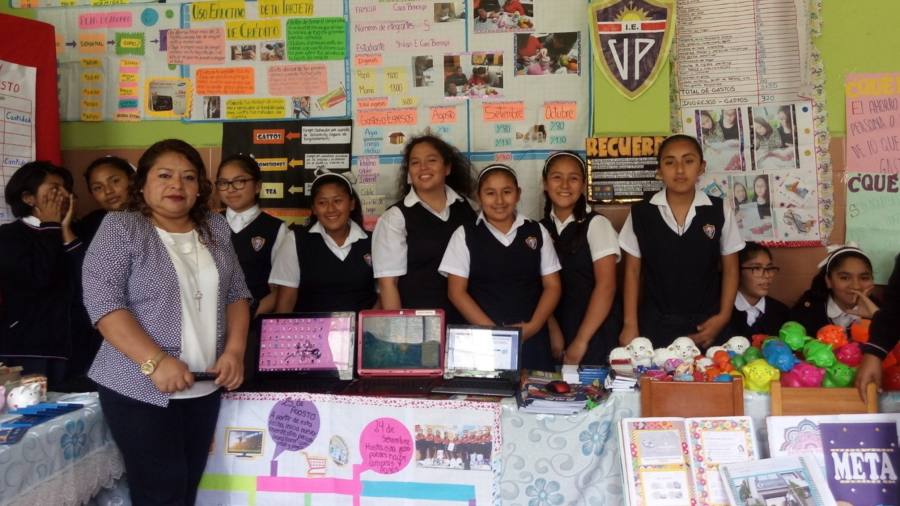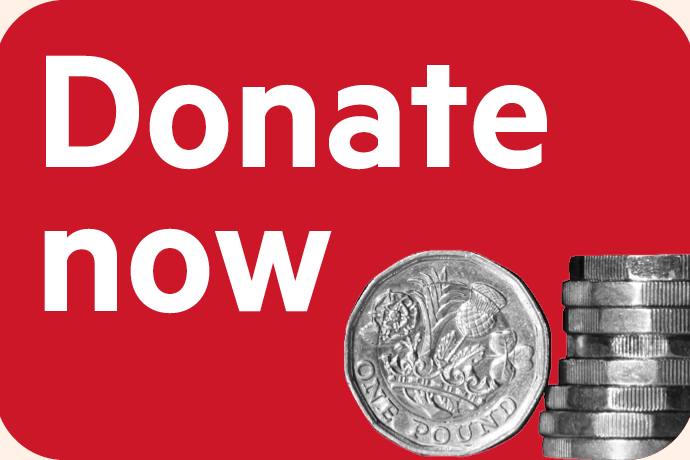
Receive free FT charity appeal updates
We’ll send you a myFT Daily Digest email rounding up the latest FT charity appeal news every morning.
This article is the latest part of the FT’s Financial Literacy and Inclusion Campaign
Over decades of teaching at schools in Lima, Peru’s sprawling capital, Hedy Flores Cabezas grew weary at seeing her students carry some of the financial stress of their parents into the classroom, as colleagues around her got buried in credit card debt.
“Many students come from dysfunctional homes, and so much of the time, those homes are wrecked by their financial situation,” Flores said. Teachers themselves would take out whatever loans they could “because they earn a so-so salary”.
For many Peruvians, financial literacy is low on the list of urgent priorities. Violent unrest roiled the country earlier this year after Congress removed leftwing president Pedro Castillo following his attempt to seize extra-constitutional powers. The copper-producing nation has had six presidents since early 2018, while more than a quarter of the population of 34mn lives in poverty.
Two decades of steady growth have failed to bridge the divisions between rich and poor. And when the Covid-19 pandemic reached Peru’s shores in early 2020, it hit the Andean nation harder than elsewhere with the world’s highest per capita fatality rate at more than 218,000 deaths.
In a bid to tackle entrenched inequalities and boost financial literacy among both primary and secondary schoolchildren, the Finanzas en el Cole — Finances in School — initiative was launched in 2007 by Peru’s national banking regulator and education ministry. It has since trained 23,000 teachers, who have given mandatory social science classes on topics including budgeting, financial institutions and credit card use.
“With better financial literacy I think there’d be less poverty,” Flores said. “Managing spending and resources is a sure-fire way to succeed.”
She added that some students at her school created their own small businesses after attending the classes, selling jewellery and bracelets on social media, while others sold cakes and pastries. Some of those students went on to study finance at higher education.
As many as 1.5mn children had been reached by teachers trained by the programme, while a 2015 study by the financial regulator behind the programme found that in secondary schools, students improved their knowledge of the financial system by 30 per cent.
“Now more than ever, it is extremely relevant to promote financial education in order to strengthen financial capacities, including knowledge, skills and attitudes, related to monetary issues,” said Andreas Diel, the director of Fundación Alemana de Cajas de Ahorro, a German non-governmental organisation working on financial literacy in Peru. “And even more so given that a considerable percentage of Peruvians are also vulnerable to entering poverty in the future.”
FT FLIC

Donate to the Financial Literacy & Inclusion Campaign here
Last year, Finanzas en el Cole won the prize for best adult education non-profit at the international Money Awareness and Inclusion Awards. The organisers of the awards cited the programme’s focus on teachers as a novel response to challenges surrounding financial literacy.
“What seemed unique about Finanzas en el Cole was that the teachers were being taught about their own money management — not how to teach a course,” said Michael Gilmore, co-founder of the awards. “Rather than say to teachers who are overworked and constantly having more demanded of them to do even more, let’s make teachers happier with their own money situation first, which would give them more confidence to talk about money to children.”
He said the approach had lessons for other countries including the UK, where financial literacy is on the school curriculum but is not taught in many schools.
Juan Carlos Chong, who heads the education and financial inclusion department at Peru’s banking regulator, said that award could lead to more collaboration with other organisations internationally. “Along these lines, as in the last 15 years, the programme will continue to develop, always focused on being a quality program with the aim of educating children and adolescents financially through their teachers.”
The pandemic gave the financial literacy programme new impetus as more Peruvians were required to open bank accounts and join the financial system in order to receive state welfare payments. “People were obliged to join the digital banking system,” said Gianmarco Cheng, director of operations at Fundación Capital in Peru, a non-profit that works on financial literacy. “This use of an electronic wallet is now allowing them to access microcredits.”
Once in the banking system, people were then able to get advice from banks and other financial institutions, Cheng added. “Mobile applications that allow people to strengthen their financial knowledge have been appearing or have been reinforced.”
By agreeing to measure its progress over time, Peru has taken a rare step as one of only three Latin American countries to participate in the OECD’s ranking of financial literacy.
According to the latest rankings from 2018 on financial literacy, which compared the OECD average of 505 points to just three countries surveyed in Latin America, Peru scored 411 points, behind neighbours Brazil and Chile with 420 and 451 respectively. In Credicorp’s 2021 financial inclusion index, Peru ranked sixth out of seven countries in the region.
While it had been one of the Paris-based think tank’s strongest improvers in reading literacy over the past two decades, Peru had made only “slight progress” in financial literacy since it was first assessed in 2015, said Andreas Schleicher, head of education and skills at the OECD.
This helps to explain why Lima is turning its sights to boosting financial literacy among ethnic minorities, who are the least connected to the financial system, and women, who own an estimated 75 per cent of microbusinesses.
The challenge now, said Chong, was for public and private sector organisations to develop effective joint “strategies to reach the population in areas far from urban centres, [in] rural areas and native communities” that “respond to their financial education needs, incorporating intercultural and gender approaches”.
Additional reporting by Leyla Boulton

